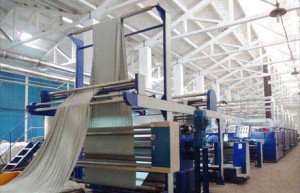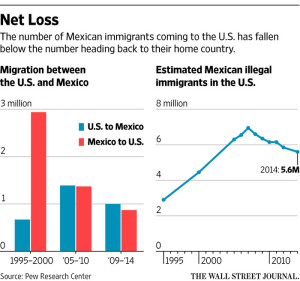Since it took effect in 1994, the North American Free Trade Agreement and its impacts have been discussed by everyone from laborers to political leaders. By establishing a free-trade zone in North America, it lifted tariffs on the majority of goods produced in Canada, the United States, and Mexico. This increased the fluidity of products among the three countries, and lately, there has been a focus on how detrimental this is to the US economy.
Take a look at the textile industry. Before NAFTA, the denim industry employed 500,000 American workers, but today, there are only 130,000 left. At a quick glance, NAFTA could be blamed for this because it is the reason why so many companies moved to Mexico in search of cheaper labor and lower overall costs. Free trade allowed American manufacturers to turn to other countries in order to better compete with domestic and international companies. In terms of the laborers left without jobs, older workers especially were forced to turn to lesser paying jobs like working at Wal-Mart or other low-wage, hourly positions. All of this makes NAFTA look rather bleak, but it is important to look at the gains NAFTA has also produced.
Close to 6 million jobs in America depend on trade with Mexico, and nearly 40% of US imports from Mexico are derived from US sources. Compared to only 5% previous to NAFTA, this increase signals some of the agreement’s successes. Going back to textiles, shipments in this industry have actually gone up since 1994 due to the fact that it became much cheaper. In reality, the job losses and trade deficit that is often blamed on NAFTA have other pertinent causes.
University of Pennsylvania Wharton professor Mauro Guillen believes that many of the jobs lost from 1994 through now would have been lost regardless of NAFTA to countries with cheaper labor such as China. NAFTA simply accelerated the process and redirected the manufacturing capacity to Mexico rather than Asia. In 2013, the trade deficit with Mexico was $54 billion, but the deficit with China was $318 billion. America’s deficit with China is five times its deficit with Mexico, which means that jobs were going to be lost to foreign countries either way. If anything, NAFTA allowed North America to create a cheaper and more seamless supply chain that benefitted American companies.
New technology improvements such as automation and robotics have also reduced the necessary number of workers, so even if jobs had not moved across borders, there would have been a downsizing in employees regardless. Many of the products made in foreign countries are also designed in the US, which opens up another set of American job opportunities.
Finally, it is important to look at the positive effects NAFTA had on Mexico’s economy. Free trade allowed Mexican workers job opportunities, and while Mexicans had previously been the largest source of immigrants to America since 1940s, immigration patterns are now reversing. More Mexicans are leaving America than coming in, and some of this can be accredited to the fact that Mexico is performing so well. It is easy to blame other countries for our own problems, but maybe Americans need to take a closer look at the true culprit.



Leave a Reply
You must be logged in to post a comment.